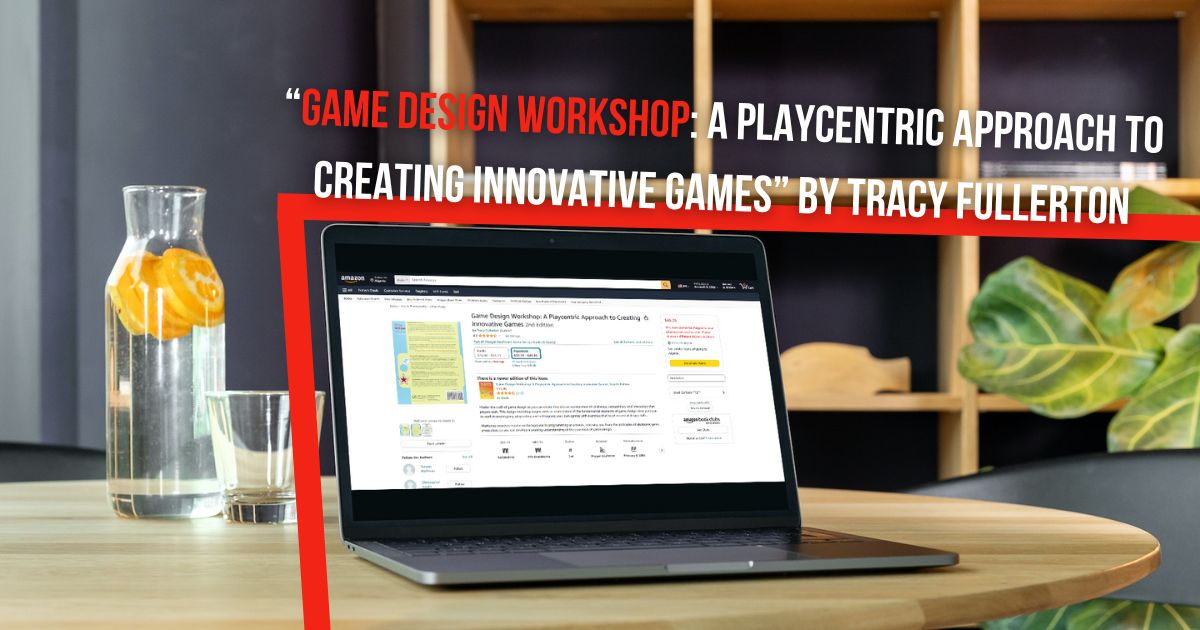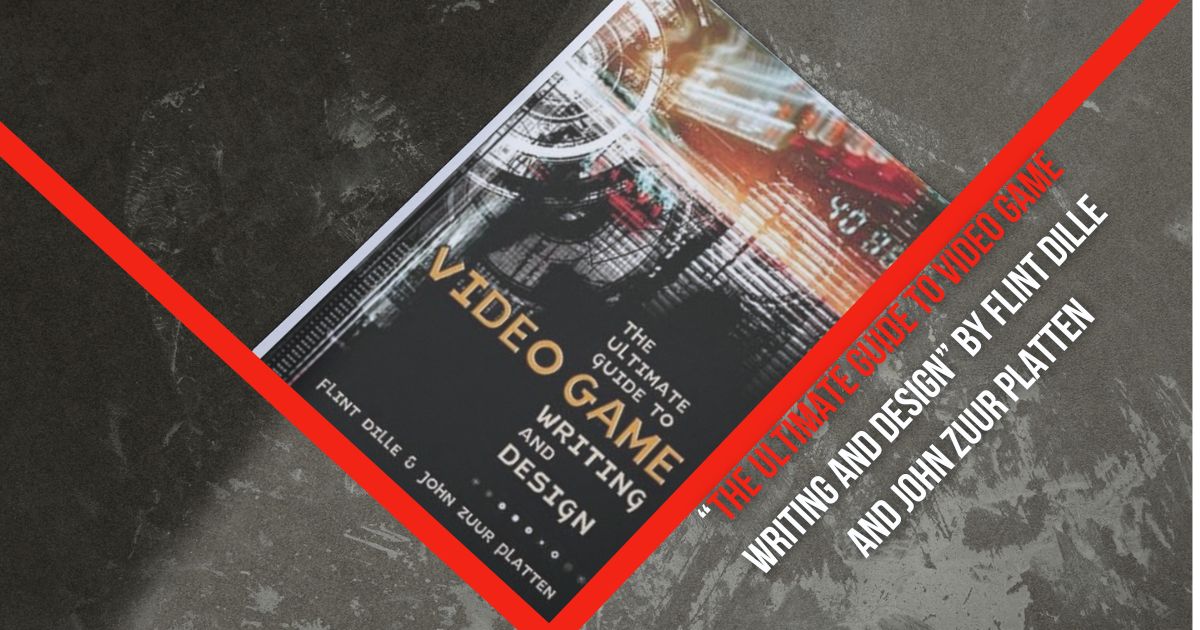1. Introduction to Game Design Books
Welcome to a captivating journey through the world of game design books. In this blog post series, we’ll explore some of the most influential and insightful texts that have left an indelible mark on the gaming industry. Game design is the art of crafting immersive, interactive experiences, and these books serve as a treasure trove of knowledge and inspiration for both aspiring and seasoned game designers.
A. The Significance of Game Design Literature in Shaping the Gaming Industry
Game design literature is more than just words on a page—it’s a roadmap that has guided game creators, from programmers to storytellers, in crafting memorable gaming experiences. This section highlights the profound influence of game design books on the gaming industry’s evolution.
B. The Role of Books in Educating and Inspiring Game Designers
Books play a pivotal role in educating and inspiring game designers by offering in-depth insights, practical techniques, and creative wisdom. We’ll explore how these texts empower designers to refine their craft and innovate in a dynamic and ever-changing field.
C. An Overview of the Blog’s Structure and the Importance of a Well-Rounded Book List
Before we embark on this literary journey, we’ll provide an overview of the blog’s structure. We’ll also emphasize the significance of curating a well-rounded list of game design books. From theory to practice, these books offer a holistic understanding of game design, making it essential to explore various facets of the craft.
Stay with us as we delve into the pages of these exceptional books, each contributing to the tapestry of game design knowledge. Whether you’re a beginner eager to learn the fundamentals or an experienced designer seeking fresh perspectives, our exploration of these books will spark your creativity and passion for game design.
2. “The Art of Game Design: A Book of Lenses” by Jesse Schell
In this blog post, we embark on a deep dive into a game design masterpiece, “The Art of Game Design: A Book of Lenses” by Jesse Schell. This book is a beacon for aspiring game designers, offering unique lenses through which to view the complex world of game creation. Here, we’ll explore the book’s content, its practical application in game design, and the invaluable insights it provides.
A. A Deep Dive into the Book’s Content, Including Lenses and Their Application in Game Design
“The Art of Game Design” is renowned for its unique approach, introducing readers to a series of “lenses” through which to analyze and design games. We’ll delve into the concept of lenses, their significance in game design, and how Jesse Schell uses them to provide a multi-faceted understanding of the craft.
B. How Jesse Schell’s Book Offers Valuable Insights for Aspiring Game Designers
This section will highlight the key takeaways from the book, including the author’s insights on creativity, player psychology, and the principles that underpin successful game design. Jesse Schell’s expertise and experience in the industry shine through in this literary gem.
C. Practical Takeaways and Exercises for Readers
We’ll wrap up this exploration with practical exercises and applications of the lenses presented in the book. These exercises will empower readers to apply the knowledge they’ve gained and put it into practice in their own game design projects.
“The Art of Game Design: A Book of Lenses” is not just a book; it’s a toolkit for game designers. It equips readers with a unique perspective and the creative tools needed to craft engaging and innovative games. Join us in this journey through Jesse Schell’s lens, and discover the artistry and science behind game design.
3. “Rules of Play: Game Design Fundamentals” by Katie Salen and Eric Zimmerman
In this segment of our exploration of game design literature, we venture into “Rules of Play: Game Design Fundamentals” by Katie Salen and Eric Zimmerman. This book is a treasure trove of knowledge, delving into the foundational principles of game design. Here, we’ll delve into the book’s core concepts and how it introduces readers to the key principles of this dynamic craft.
A. An Exploration of the Foundational Concepts Presented in the Book
“Rules of Play” serves as an excellent entry point for aspiring game designers. We’ll explore the foundational concepts presented in the book, covering topics like game mechanics, systems, and player experience. These concepts lay the groundwork for creating compelling and engaging games.
B. How Katie Salen and Eric Zimmerman’s Work Introduces Readers to the Core Principles of Game Design
This section highlights how the authors, Katie Salen and Eric Zimmerman, guide readers through the core principles of game design. Their expertise in the field is evident in the book’s comprehensive approach to understanding the essence of games and the art of their design.
C. Exercises and Practical Knowledge Gained from “Rules of Play”
We’ll conclude this exploration by discussing the practical knowledge gained from the book, including exercises and insights that help readers internalize the fundamentals of game design. “Rules of Play” equips readers with the tools they need to dissect and create games with confidence and creativity.
“Rules of Play: Game Design Fundamentals” is a foundational text in the world of game design books and literature. It empowers readers to understand the fundamental principles that underlie games, setting the stage for them to create engaging and immersive experiences. Join us on this journey through the rules of play, and discover the art and science of game design at its core.
Also check Best Indie Game Engines for Indie Developers (free included)
4. “Game Design Workshop: A Playcentric Approach to Creating Innovative Games” by Tracy Fullerton
In this installment of our exploration of game design books, we delve into “Game Design Workshop” by Tracy Fullerton. This book takes a unique playcentric approach to game design, offering invaluable insights for both beginners and experienced designers. Here, we’ll dive into the book’s content, its distinctive approach to game creation, and how it nurtures innovation in game design.
A. A Breakdown of Tracy Fullerton’s Approach to Game Design Through Playcentric Methods
“Game Design Workshop” is known for its playcentric approach. We’ll dissect what this approach entails, how it differs from other design methods, and why it’s an essential perspective for budding game designers.
B. How the Book Guides Readers Through Practical Exercises and Creative Processes
Practicality is a hallmark of “Game Design Workshop.” This section will explore the book’s emphasis on hands-on learning, providing readers with a range of exercises and creative processes. These activities will help readers apply the concepts they’ve learned to real-world game design projects.
C. The Role of “Game Design Workshop” in Nurturing Innovation in Game Design
Tracy Fullerton’s book is more than a guide; it’s a catalyst for innovation in game design. We’ll highlight how the book encourages readers to think outside the box, experiment, and push the boundaries of traditional game design. It empowers designers to create unique and groundbreaking games.
“Game Design Workshop: A Playcentric Approach to Creating Innovative Games” is a roadmap to innovative game design. It encourages readers to engage in playful exploration, hands-on learning, and out-of-the-box thinking, equipping them to create games that stand out in a competitive industry. Join us in this journey through the playcentric approach, and discover how creativity and innovation can shape the games of tomorrow.
5. “The Ultimate Guide to Video Game Writing and Design” by Flint Dille and John Zuur Platten
In this segment of our exploration of game design books, we venture into “The Ultimate Guide to Video Game Writing and Design” by Flint Dille and John Zuur Platten. This book places a spotlight on storytelling and narrative in game design. Here, we’ll explore the book’s focus on the narrative aspects of game creation, its insights, and the role of storytelling in the gaming world.
A. An Exploration of the Book’s Focus on Storytelling and Narrative in Game Design
“The Ultimate Guide to Video Game Writing and Design” places a strong emphasis on the importance of storytelling and narrative in the gaming industry. We’ll delve into the book’s approach to narrative and how it differs from other game design literature.
B. How Flint Dille and John Zuur Platten Equip Readers with Tools for Creating Compelling Game Narratives
The authors, Flint Dille and John Zuur Platten offer valuable tools and insights for crafting engaging game narratives. This section will highlight how the book empowers readers with the knowledge to create immersive stories in the interactive medium of games.
C. Takeaways and Insights on the Importance of Storytelling in Gaming
We’ll wrap up this exploration with key takeaways and insights gained from the book. “The Ultimate Guide to Video Game Writing and Design” underlines the significance of storytelling in gaming and equips readers with the skills to create compelling narratives in their games.
Storytelling is at the heart of many unforgettable games, and this book serves as a guide to mastering the art of game narrative. Join us in this journey through the world of video game writing and design, and discover how storytelling adds depth and immersion to the gaming experience.
6. Conclusion: Building Your Game Design Library
As we near the end of our exploration into the world of game design literature, it’s time to take stock of what we’ve learned and discuss the importance of building your personal game design library. This section serves as a reflection on the value of diverse perspectives, the wealth of knowledge at your disposal, and the endless possibilities that come with owning a collection of game design books.
A. The Value of Diverse Perspectives in Game Design Literature
Game design is a multifaceted field, and no single book can cover every aspect comprehensively. We’ll discuss the significance of seeking diverse perspectives by reading a variety of books, each offering a unique angle on game design. This diversity is essential for honing a well-rounded understanding of the craft.
B. Encouragement to Build Your Own Game Design Library for Continuous Learning
We’ll encourage you to consider creating your own game design library, a collection of books that you can refer to at different stages of your design journey. Whether you’re a beginner, an intermediate designer, or an experienced pro, your library will be a treasure trove of knowledge and inspiration.
C. A List of Additional Resources and References for Further Reading
To conclude our exploration, we’ll provide a list of additional resources and references for further reading. This list will help you expand your game design knowledge and ensure that you have access to a wealth of information as you continue your journey in the world of game design.
Building your game design library is an investment in your growth as a designer. Each book you add to your collection is a stepping stone to becoming a more knowledgeable, creative, and innovative game designer. Game design is a dynamic field, and your library will be a valuable resource to stay current and inspired. Continue exploring, creating, and innovating in the world of game design, and may your library be your guiding light in this exciting journey.
- Gamasutra: A valuable resource for game design articles, news, and insights.
- Extra Credits YouTube Channel: A YouTube channel that offers educational content on game design and game development.
- The Game Developers Conference (GDC): An annual event that provides access to in-depth talks, presentations, and discussions on game design.
- The International Game Developers Association (IGDA): A global network of game developers with resources and community support.
- Game Design Books on Goodreads: A collection of game design books with reviews and ratings to help you choose your next read.































